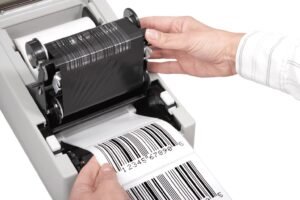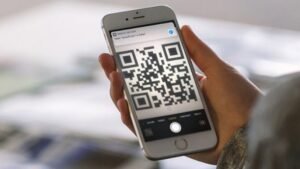Barcode Labels vs. QR Code Labels – Which One Fits Your Business Needs in Dubai?In Dubai’s highly competitive business environment, making the right choices for your operations can set you apart. One of the most overlooked—but critically important—decisions is how you label your products. At Labels and Labeling, we work with a wide range of businesses that need help choosing between barcode labels and QR code labels. Both serve a unique purpose, and your decision should depend on how you want the label to support your business goals.
Let’s start with the classic and widely used barcode labels. These are one-dimensional codes made up of black vertical lines and spaces, commonly found on retail products, warehouse stock, and shipping boxes. They’re not flashy, but they are highly effective. Barcode labels are a preferred solution for companies that value speed, simplicity, and system compatibility. They are quick to scan, easy to print in bulk, and universally accepted by most inventory and point-of-sale systems.
Benefits of Barcode Labels:
- Low cost: Perfect for businesses that need to print in large quantities.
- Quick scanning: Ideal for fast checkout or warehouse tracking.
- High accuracy: Minimizes manual data entry errors.
- Broad compatibility: Works with most retail and inventory systems.

If your business involves managing inventory, processing goods, or selling through retail outlets, barcode labels offer a practical, cost-effective solution that simply works.
On the flip side, we have QR code labels, which are becoming increasingly popular in Dubai’s digital-first landscape. A QR code (Quick Response code) is a two-dimensional square grid that can hold a large amount of data, much more than a traditional barcode. These labels can link customers directly to websites, videos, online menus, product pages, payment gateways, and more, using nothing more than a smartphone camera.
At Labels and Labeling, we’ve seen a wide range of businesses—especially in food delivery, hospitality, events, and retail—successfully use QR code labels to engage their customers more effectively.
Benefits of QR Code Labels:
- High data capacity: Great for embedding detailed information or web links.
- User-friendly: Easily scanned by smartphones—no special devices needed.
- Marketing-ready: Useful for promotions, reviews, and reordering systems.
- Modern appeal: Enhances your packaging with a digital edge.

If your aim is to offer a connected experience, enhance customer interaction, or run digital marketing campaigns, QR code labels are a valuable tool.
So, what’s the actual difference? It boils down to function and intent. Barcode labels are focused on internal operations, making sure your processes run smoothly and efficiently. QR code labels, meanwhile, are all about external engagement—bringing your customer closer to your brand. In some cases, a hybrid label approach might be best: a barcode for internal use, and a QR code for the consumer.
At Labels and Labeling, we understand that no two businesses are alike. That’s why we offer customised label solutions to suit your exact requirements. Whether you need waterproof barcode labels for warehouse shelving or creatively designed QR code labels for retail packaging, our team is equipped with the technology and expertise to deliver high-quality results, fast.
In conclusion, the decision between barcode labels and QR code labels comes down to your primary goal. If you’re looking to optimize your back-end processes, improve tracking, and reduce time, consider using barcode labels. If you want to engage customers, share information quickly, or create a digital brand experience, QR code labels are your answer. And if you need help balancing both? That’s where Labels and Labeling come in.
With years of experience serving clients across Dubai and the UAE, we’re here to help you find the perfect labeling solution that supports your business goals today—and scales with you tomorrow.
In Dubai’s highly competitive business environment, making the right choices for your operations can set you apart. One of the most overlooked—but critically important—decisions is how you label your products. At Labels and Labeling, we work with a wide range of businesses that need help choosing between barcode labels and QR code labels. Both serve a unique purpose, and your decision should depend on how you want the label to support your business goals.
Let’s start with the classic and widely used barcode labels. These are one-dimensional codes made up of black vertical lines and spaces, commonly found on retail products, warehouse stock, and shipping boxes. They’re not flashy, but they are highly effective. Barcode labels are a preferred solution for companies that value speed, simplicity, and system compatibility. They are quick to scan, easy to print in bulk, and universally accepted by most inventory and point-of-sale systems.
Benefits of Barcode Labels:
- Low cost: Perfect for businesses that need to print in large quantities.
- Quick scanning: Ideal for fast checkout or warehouse tracking.
- High accuracy: Minimizes manual data entry errors.
- Broad compatibility: Works with most retail and inventory systems.

If your business involves managing inventory, processing goods, or selling through retail outlets, barcode labels offer a practical, cost-effective solution that simply works.
On the flip side, we have QR code labels, which are becoming increasingly popular in Dubai’s digital-first landscape. A QR code (Quick Response code) is a two-dimensional square grid that can hold a large amount of data, much more than a traditional barcode. These labels can link customers directly to websites, videos, online menus, product pages, payment gateways, and more, using nothing more than a smartphone camera.
At Labels and Labeling, we’ve seen a wide range of businesses—especially in food delivery, hospitality, events, and retail—successfully use QR code labels to engage their customers more effectively.
Benefits of QR Code Labels:
- High data capacity: Great for embedding detailed information or web links.
- User-friendly: Easily scanned by smartphones—no special devices needed.
- Marketing-ready: Useful for promotions, reviews, and reordering systems.
- Modern appeal: Enhances your packaging with a digital edge.

If your aim is to offer a connected experience, enhance customer interaction, or run digital marketing campaigns, QR code labels are a valuable tool.
So, what’s the actual difference? It boils down to function and intent. Barcode labels are focused on internal operations, making sure your processes run smoothly and efficiently. QR code labels, meanwhile, are all about external engagement—bringing your customer closer to your brand. In some cases, a hybrid label approach might be best: a barcode for internal use, and a QR code for the consumer.
At Labels and Labeling, we understand that no two businesses are alike. That’s why we offer customised label solutions to suit your exact requirements. Whether you need waterproof barcode labels for warehouse shelving or creatively designed QR code labels for retail packaging, our team is equipped with the technology and expertise to deliver high-quality results, fast.
In conclusion, the decision between barcode labels and QR code labels comes down to your primary goal. If you’re looking to optimize your back-end processes, improve tracking, and reduce time, consider using barcode labels. If you want to engage customers, share information quickly, or create a digital brand experience, QR code labels are your answer. And if you need help balancing both? That’s where Labels and Labeling come in.
With years of experience serving clients across Dubai and the UAE, we’re here to help you find the perfect labeling solution that supports your business goals today—and scales with you tomorrow.



Comments are closed.